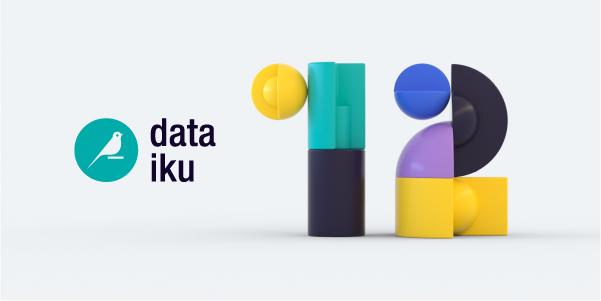Building trust with business stakeholders is one of the biggest challenges for data teams working on AI projects. Unfortunately, new technology, like generative AI chatbots and services, only further the problem by sending data teams back to the lab behind closed doors as they experiment with new techniques. Instead of going backward, teams should leverage enterprise best practices that have helped them build credibility for other predictive techniques as they bring generative AI to their business counterparts.
One critical element of trust for AI projects is that builders, users, and executives can see what is happening in projects and understand project outputs. This transparency and explainability help everyone feel comfortable using project outputs to make business decisions.
Dataiku was designed from the ground up as a platform where teams of technical and business people can work together on data and AI projects. The visual nature of the environment with graphical workflow, clickable elements, and human-in-the-loop modeling gives the entire process a relatable feel that is not possible in other systems.
Dataiku 12 continues this tradition of transparency and explainability with new features that take traditionally opaque processes and open them for everyone to see.

OpenAI GPT Integration
Generative AI is hot right now, and people from technology and business teams want to take advantage of it. The challenge is letting teams use generative AI while incorporating it into projects and processes that are visible to everyone. The Dataiku OpenAI GPT integration allows business users to incorporate Open AI's GPT models into data projects by extending datasets and performing tasks using a visual interface and natural language prompts, all while maintaining transparency and trust in project outputs.
Learn more about Dataiku's OpenAI GPT integration here.
Automatic Feature Generation
Creating features for predictive models using automated, brute-force methods can result in opaque data that nobody on the team understands. One way to improve the transparency of feature generation is to capture the inputs and process steps used to create the features and make that information available for everyone to see. Automatic feature generation in Dataiku saves time when developing features for modeling and does it in a documented way that gives people control and confidence in the results.
Automatic Feature Generation Overview
Universal Feature Importance
Understanding which features provide the signal for model outputs is vital for everyone on a data and AI project. For data scientists, it tells them what data is essential. Business stakeholders can use feature importance to see if model inputs and outputs match their experience.
With new universal feature importance, teams have a single way to evaluate feature importance across models, including those built outside Dataiku in tools like MLFlow, written in code notebooks, or created in data science tools like SageMaker. A consistent way to explain models allows for better comparison and understanding across modeling techniques and helps build confidence in models and AI projects.
Universal Feature Importance Overview
Uplift Modeling
Typical predictive modeling techniques use the correlation between input data values and target outputs to create predictions. Users can interpret this relationship as having a cause-and-effect relationship, but that is not the case. Causal ML techniques take a different approach that enables understanding more exact input-to-output relationships. Uplift modeling, one application of causal ML, enables data teams to focus on cause-and-effect relationships in results and for specific groups, increasing the understanding of modeling outcomes and improving results for retail and marketing use cases, fundraising, medical treatment and clinical trials, human resources, political campaigns, and more.
Dataiku Uplift Modeling Overview
Generative AI is one of the hottest topics from classrooms to boardrooms, but the hype will only lead to value if data and business teams can build real applications that everyone can believe in. Dataiku 12 delivers new features that continue our mission to provide the most transparent and explainable experience for data and business teams so they can confidently take advantage of innovation.




